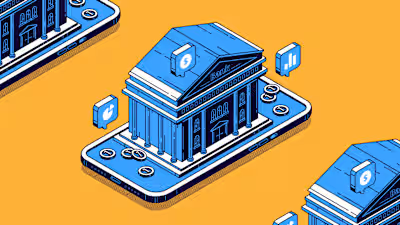Using Wireless Mesh mmWave to Fix Cities with Bad Internet
1571 of 1500 words
Client: Movandi / Greenflash on Clearvoice
The first quarter of the 21st century is nearing its completion and access to a high- quality broadband internet connection is considered in some parts of the country as being both diCicult to build as well as not being a cost-eCective solution. This is very apparent in some of our most densely populated urban centers where city dwellers still struggle to manage having a decent internet connection that can meet the realities of their fast-paced lifestyles and ever-changing requirements. The end result is the inability to achieve ones greater potential due to ineCective broadband internet services that consistently has been unreliable both time and time again for the consumers.
Cities with the Worst Internet: New and Existing Problems
This has been widely discussed for the last several years while communication networks, technological innovations, and new capabilities continue to evolve from the pipeline stage to becoming more streamlined for massive utilization purposes. A big problem in why cities continue to struggle with poor internet access is because of existing infrastructure, the way they were originally set up, and the system that is currently in place holding things up. This is a big picture issue that needs a great deal of attention in the cities that are hardest hit with this dilemma. Another big problem is the way that technology has continuously evolved quickly, which has made it more costly and diCicult to being adaptable for the system architecture.
Complication of 5G Revolution is also the Answer for Cities with Poor Internet Connection
It is important to keep in mind that this was a big problem for these communities long before the 5G movement became a significant factor. However, 5G complicated the matter a lot more for these communities that were still getting caught up with the rest of the country. Fortunately, we are now in the second phase of the 5G deployment stage. This helps to put things in perspective because the first phase had been a confusing period for companies setting up their own strategies. They were completely out of sync with each other as they did their own versions. However, such industry changing trends require solid mediums for the masses at large.
The ”Goldilocks” Mid-band Phase of 5G OKers Viable Solutions
This explains the current phase, also known as the second phase of 5G deployment. This is also known as being the “goldilocks” period. It represents a realistic medium
solution to bring order and balance to 5G deployment and operability growth. The “goldilocks” solution is a mid-band spectrum that has become the necessary medium that the 5G revolution lacked with companies like Verizon, AT&T, and T-Mobile doing diCerent radical strategies that weren’t in sync with 5G trends. With the new medium, customers in the cities with the worst internet coverage will be able to acquire access to networks with data speeds that can surpass the currently desired 10 Gbps. That would be a vast and significant improvement for these communities hardest hit with poor internet connection.
The Future of Urban Center Internet Coverage is mmWave
This is why Millimeter-Wave, also known as mmWave is now considered being the ideal “goldilocks” solution for cities with the worst internet connection. 5G mobile and internet communications can benefit greatly with the use of mmWave technology as it oCers sophisticated, aCordable, and much easier solutions that provide a multi-gigabit transmission rate. Also, mmWave oCers the potential for providing 1,000 percent greater capacity and 100-times more devices than 4G currently provides for customers in this market environment. In addition, mmWave has exhibited great potential for providing an unlimited number of choices and options for the user to decide between types of hardware and bandwidth setup.
There are three reasons why the mid-band spectrum with mmWave can can be oCered as a viable and streamlined solution for cities with very poor internet connection. First, it oCers them with higher bandwidth rates over the lower frequency bands that were previously used by the slower 1G to 4G coverage. Second, mmWave bands are cheaper to be deployed by the operators as well as for subscribers. Thirdly, mmWave commercial technology is abundantly available for full-scale deployment everywhere, but especially for urban centers with very poor internet connection. Overall, the level of diCraction, reflection, and scattering is a lot lower with mmWaves as they tend to have less blockage since they also address signal fading issues too.
What Cities are Doing to Fix the Coverage Problem
The CoVid-19 pandemic caused a significant increase in internet usage requirements as people were forced to stay at home because of the lockdowns. This resulted into a much greater need for operating in the digital sphere as peopled worked at home, made more online purchases, and did their classes on Zoom. Overall, the internet traCic increased immensely because of these policies, and it forced a much greater need for developing quick and proactive solutions incorporated by the city and state governments to improve digital bandwidth access. However, they are still resolving the
problems as some have had their successes while others are still figuring out the best course of action for their municipality and citizens.
Chattanooga, Tennessee
Some cities like in Chattanooga, Tennessee managed to establish a municipal network for their city that covered the entire area back in 2010. The local government had decided that they would install their own fiber-optic cables throughout their cities hanging on streetlights. This served not only the city residents but also businesses that greatly desired having a new and improved stronger grid system that was fast and reliable. However, this approach set up a major set of legislative and legal challenges that prevented the city of Chattanooga to expand their network with neighboring jurisdictions. This unfortunate fate ended up denying the opportunity to be presented to other cities throughout the U.S. and failed to recognize the vast potential of having such a network.
In fact, there are currently 22 states with laws that either prevent or prohibit local governments and communities from establishing their own broadband networks. This would potentially help these communities, but this is usually prevented by commercial providers who lobby against it. They tend to block this law to protect their businesses from what they perceive as promoting unfair competition. However, restricting this access any longer will continue to damage the economic and social structures of these communities if left completely unresolved.
Using Pre-existing Infrastructure for Creating Free Connectivity for Low Income Households
Both Chattanooga, Tennessee and San Antonio, Texas are a couple of examples where cities and municipalities oCered free access to a segment of their populations that are both low-income households and homes that lack in-home internet access. This approach is considered a narrower version of municipal broadband that gets around the restrictions lobbied by the commercial providers. For example, Chattanooga has achieved this by creating an “aCordable network” that targets only low-income households. They do this by creating a series of networks that fall under this category that bridge together over 30 so far. The idea presents an aCordable solution that not only tackles the problems imposed by the pandemic but afterward as well with the networks having been established.
The use of existing infrastructure also helps in this process as they can utilize pre- existing networks to low-income students with free access to the internet. Chattanooga also applied this approach as well as San Antonio, who has over 38% of its households lacking in-home internet access. The people in this city rely on pre-existing infrastructure to
make this possible. This is a result of years of planning where the municipality had previously built an extensive network of fiber-optic cables that provided internet to major government buildings, community centers, schools, and libraries. The pandemic closed many of these places and it impacted negatively toward underserved students that relied heavily on it.
Utilizing Mesh Wireless Networks
Although using wired fiber optics is often considered the gold standard for having broadband internet, it often is not as prevalent since it takes time to establish the infrastructure. Few cities have this set up in their municipalities, which is why they’ve decided to aim towards establishing wireless networks too. This is for both low income and the average citizen as well. Also, mmWave commercial technology is abundantly available and can play a big role in setting up these wireless systems for municipalities that are hardest hit with poor internet connection.
Companies like Movandi oCer great options for these municipalities that require mesh wireless networks too. Movandi’s platformcomposes of a wide variety of applications such as innovative BeamXR smart repeaters, infrastructure, fixed wireless, portable devices, IoT, and vehicles. These oCer many advantages for those requiring using chipsets, antennas, custom modules optimized for 5G mmWave performance, which is both energy eCicient and cost reductive. In addition, Movandi’s platform also utilizes intelligent softwaresuch as unique BeamXR software, defined beam networking, cloud control, and AI improved performance.
Conclusion
In conclusion, cities that have been hardest hit with poor internet connection still have several viable options for their citizens. These problems were critical prior to the CoVid-19 pandemic but it has increased the quick need for solutions given the increasing usage. Some municipalities have managed to utilize their existing wired infrastructure under specific limitations. However, the big immediate answer for these struggling urban communities will be the rapid and aCordable deployment of wireless mesh networks that utilize mmWave technological solutions that companies like Movandi oCers them.
Like this project
Posted Aug 28, 2024
Worked with a marketing agency editor and content strategist to craft this piece for thought leadership.









